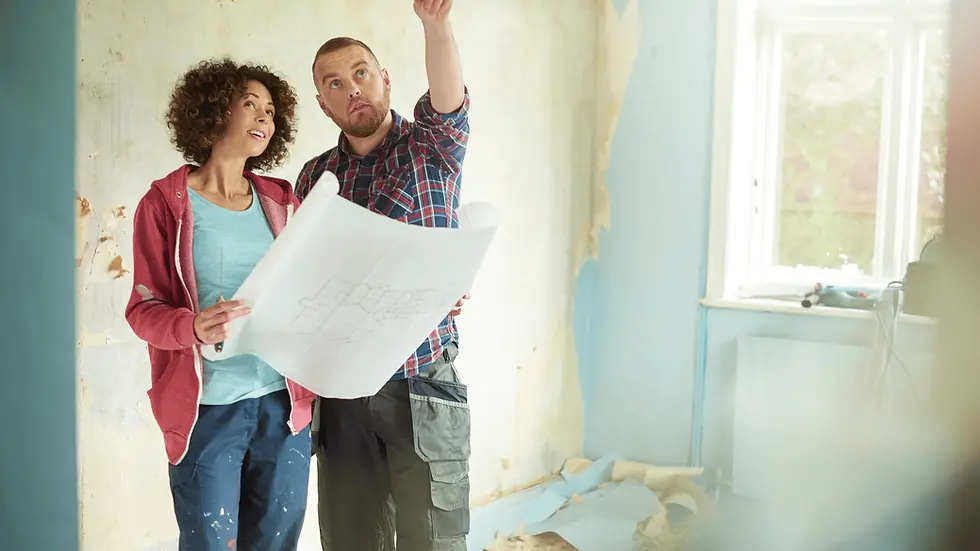5 Key Factors to Consider When Planning Commercial Renovations in Victoria, TX
- Framing to Finish

- Jun 1
- 3 min read
Updated: Nov 10
Planning a commercial renovation in Victoria, TX? If you're giving an office space a fresh layout or updating an aging retail building, there’s a lot that goes into a successful remodel. From permits and budgeting to building assessments and team selection, a well-planned renovation sets the stage for a functional and cost-effective result. Let’s walk through five key areas you’ll want to lock in before moving forward with any commercial upgrade.
1. Know the Local Codes and Permits
Before anything else, check in with city regulations. Every location has its own rules, and in Victoria, the city follows the 2021 International Building Code with local adjustments to fit regional needs. You’ll need to submit comprehensive plans that outline site layouts, structural components, and project specifics to get the necessary permits.
If the renovation will cost $50,000 or more, the Texas Accessibility Standards (TAS) come into play. This is required, and you’ll need to register the project with the Texas Department of Licensing and Regulation and submit plans for review to ensure accessibility features are integrated where needed.
It’s worth emphasizing: assuming someone else has taken care of permitting can backfire. Stay involved in that part of the process. Delays, fines, and stop-work orders are avoidable headaches if you work closely with the city’s Development Services office and review guidelines early on.
2. Inspect the Existing Property
Get a solid understanding of the property before you draw up any design plans. This means bringing in professionals to evaluate the condition of the structure, electrical systems, plumbing, and mechanical components. Old buildings often come with hidden surprises—leaky pipes, worn-out wiring, or foundation issues. You don’t want to find those mid-construction.
Asbestos is another common hurdle, especially in structures built before the 1980s. In Texas, an asbestos survey is required for commercial renovations, even if you’re only doing light work. Skipping this step could halt your project later. A licensed inspector can help you determine what materials are safe and what needs remediation.
A detailed assessment saves you time and money. You’ll avoid change orders and last-minute scrambles by understanding what you’re working with upfront. It also helps your contractor provide a more accurate bid.
3. Create a Realistic Budget and Timeline
It’s easy to get excited about design ideas, but financial planning should come first. Your renovation budget should cover design, materials, labor, permitting, inspections, and cleanup. Don’t forget the unexpected; add a 10–15% buffer for unforeseen issues or last-minute changes. Construction costs alone usually take up the majority of your budget, often around 50–60%.
Break the project into phases and assign a timeline to each stage. Think about when you’ll need plans finalized, permits in hand, materials ordered, and construction started. Then build in time for things that often cause delays, like backordered supplies or contractor scheduling conflicts.
Regularly reviewing the timeline helps you stay ahead of issues. Weekly check-ins with your contractor can keep the schedule moving and give you a chance to adjust as needed without throwing off the entire project.
4. Plan for Energy Efficiency
If you’re already doing major work, this is a good time to make your building more efficient. You don’t need a full overhaul to cut long-term utility costs. Even simple upgrades like LED lighting, better insulation, and low-flow fixtures can bring noticeable savings.
Larger upgrades, like modern HVAC systems or energy-efficient windows, can yield even more benefits over time. You might also qualify for rebate programs through providers like Oncor, which offer incentives for certain energy-saving improvements. These programs can offset initial costs and help you recover your investment faster.
Designing with energy efficiency in mind also appeals to today’s tenants and customers. Whether you're leasing space or running your own business, an efficient building is a selling point that can boost property value and satisfaction.
5. Choose the Right Team
A commercial renovation isn’t something to tackle without the right help. You want licensed professionals who understand the type of work you're doing and who are familiar with the permitting and inspection processes in Victoria.
This means working with architects who can design within code, engineers who ensure your systems are sound, and contractors who can deliver results on schedule. Don’t hesitate to ask for references or visit past project sites before you sign any contracts. Experience matters, especially when you’re investing in a space your business depends on.
At Framing to Finish, we’ve worked with business owners across Victoria to renovate everything from office suites to retail storefronts. Our team handles each stage of the project with care, from dealing with permits to coordinating trades or managing timelines. We believe a well-run renovation starts with communication, clear planning, and a hands-on approach. Schedule your consultation today and take the first step toward a better workspace.





